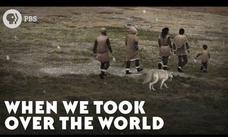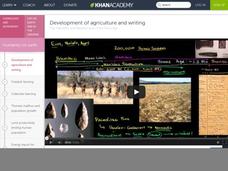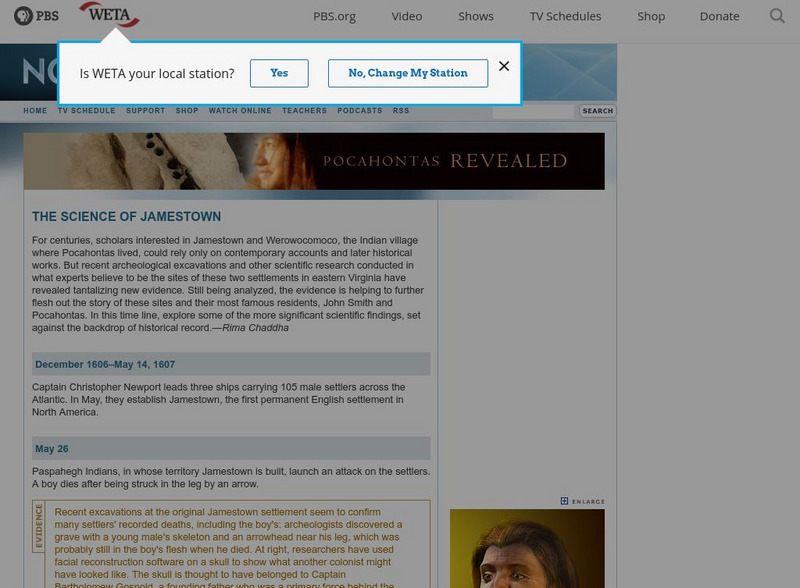Be Smart
A Mammoth Undertaking: The Science of De-Extinction!
If scientists could use biotechnology to bring back extinct species, should it? A thought-provoking video explores the technical and ethical considerations of this question as part of a larger biology playlist. It explains what would be...
The Brain Scoop
The First Brachiosaurus
How do scientists know when they've discovered something new? Travel back in time to when dinosaurs roamed the earth using an interesting video, which is part of Brain Scoop's Fossils and Geology playlist. The narrator examines the...
TED-Ed
The Search For King Richard III - The Archaeological Dig
The discovery of the remains of King Richard III in early 2013 sparked media attention all over the world. Take a walk through the archaeological site itself and learn about the process behind the excavation, from how the dig site was...
PBS
Can We Get DNA from Fossils?
Just how long can a fossil preserve DNA? It seems that DNA becomes unreadable after about 6.8 million years. Learn about the science that helped make this conclusion and the mistakes made along the way in a lesson from a PBS Eons video...
PBS
When We Took over the World
Exactly how did humans become the top of the food chain? Follow archeologists through an analysis of the fossil records during a video presentation from the PBS Eons series. The ancient artifacts trace human evolution from Africa to the...
American Museum of Natural History
Meet the OLogist David Hurst Thomas
David Hurst Thomas loves the children's book The Cat in the Hat and Rocky Road ice cream. He's also loves being an archaeologist. Thomas shares his passion for studying old things in a short video where he answers questions posed by...
Curated OER
Ice Age People in Florida?
Spring breakers first gathered in Wakulla Springs, Florida, over 10,000 years ago! A video explains how geologists and archaeologists work together to uncover hidden artifacts from this time period.
Howard Hughes Medical Institute
Popped Secret Film with Quiz: The Mysterious Origin of Corn
Where does corn come from? Corn cobs? Scholars watch an interesting video to learn that the ancestor of maize is the teosinte plant. The video goes on to explain how both geneticists and archaeologists have evidence that humans were...
PBS
Did Raptorex Really Exist?
Ancient fossils have many stories to tell. Scientists must use different strategies to read these remnants. A video lesson explains how archeologists use different strategies to date each specimen. The timeline of a fossil helps identify...
TED-Ed
What Can You Learn From Ancient Skeletons?
Skeletons may not be able to speak, but they can still tell us a lot. High schoolers watch a short video about the ways biological anthropologists can use a skeleton's bone structure to determine age, gender, place of birth, and social...
TED-Ed
The Hidden Worlds within Natural History Museums
Behind the closed doors of natural history museums lies a hidden world of scientific research and discovery that goes unseen for visitors. Follow along as this short video explores different scientific mysteries that have been solved...
Curated OER
Development of Agriculture and Writing
Starting out with a brief explanation of eras, periods, and ages, this lecture presents general information on the Stone Age and the Bronze Age. Using images and a timeline, the narrator covers the Paleolithic, Mesolithic, and Neolithic...
MinuteEarth
Garbage Doesn't Lie
What does your garbage say about you? Young scientists dig through a video about things people cast aside. The narrator shows the fascinating things in George Washington's garbage pile, ancient Roman garbage, and how the landfills we...
American Museum of Natural History
Ask a Scientist About T. Rex
With its small arms and giant body, many children are fascinated by the T-Rex. Use the online resource to learn about the characteristics of the T-Rex and how scientists study the extinct species. A paleontologist answers a series of...
PBS
Nova Online: Remote Sensing in Archaeology
This article, a companion piece to a NOVA special called "Lost City of Arabia," explains remote-sensing technologies that are helping archeologists find ancient cities from the air.
PBS
Nova: Pocahontas Revealed: The Science of Jamestown
This website matches up contemporary reports and later historical information about Jamestown with recent archaeological evidence that confirms such information.
Smithsonian Institution
National Museum of Natural History: Qrius: Human Evolution Early Human Diets
An archaeologist explains how the bones of early humans can reveal information about their diets. [29:15]
Smithsonian Institution
National Museum of Natural History: Qrius: Island Biodiversity Tracking Human Influences
How do inhabitants on islands alter the ecosystem over time? An archaeologist will identify specific changes over many years that occurred as a result of human arrival on islands. [29:16]


















